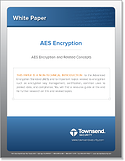Download Podcast: Higher Education Under Attack - Data Privacy 101
|
We’ve seen some high profile data breaches at colleges and universities lately. People have been asking if there is any reason why these organizations are experiencing a higher level of attack, and why this is happening now. Are they more susceptible in some way?
There is some good evidence that higher education institutions are experiencing data breaches at a higher rate than other organizations. Just based on the reported number of reported breaches, number of records stolen, and the number of colleges in the general population of targets, you can conclude that they are, in fact, experiencing a higher rate of loss.
Are college students responsible for the higher levels of breaches?
In spite of the fact that college students are far more knowledgeable about technology, and have a high curiosity index, there is no evidence that students are the source of these breaches. If you look at insider threats and include students in this category, the data doesn’t support this idea. And students don’t want to put their academic opportunities on the line over a break-in, they are way too smart to put that much at risk.
So, why are colleges experiencing higher rates of loss?
Asked why he robbed banks, Willie Sutton supposedly said “Because that’s where the money is.” A typical college runs retail operations through book stores and cafes, collects critical financial information about students and their families, and may operate a student health service. They are complex modern operations with very large amounts of sensitive data that is often retained for many years. I believe that colleges and universities are considered high value targets because they have a lot of valuable information.
Here are some things that higher education organizations can do right away:
1) Know where your sensitive data lives.
You should have a good inventory of all of the systems that collect and store credit card numbers, social security numbers, financial information, and student patient information. Having a good map of your data assets is crucial to your data protection strategy.
2) Purge the data you no longer need.
We sometimes forget to take out the trash in our IT systems, and that historical data can be the target of a data breach. Now that you know where your data lives, purge the historical data that you don’t need.
3) Prioritize your attack plan.
We all tend to do the easy things first. There is some satisfaction in getting some points on the score board early in the game. Resist this tendency and protect the most valuable assets first.
4) Protect your data with strong encryption and key management.
There is a lingering belief that encryption is difficult and expensive, especially when it comes to encryption key management systems. That is no longer true! Be sure to include encryption and proper key management in your data protection strategy. If front-line defenses fail, and they will, be sure that the data that is stolen is unusable because it is encrypted.
There are reasons for colleges and universities to be optimistic about improving their data protection posture. Security professionals have learned a lot over the last few years, and there is better guidance and best practices on how to tackle this problem. And security vendors now offer more affordable and easier to use encryption and key management solutions. Download our podcast "Higher Education Under Attack - Data Privacy 101" for more information on what universities can do to prevent data breaches and how to easily get started today.
Patrick




 About 5 years ago I set myself the task of reading every state's data privacy law. There were 44 states that had passed some form of data privacy law, and several were in the process of updating them. I also created a spreadsheet and cross-referenced information what each state considered Personally Identifiable Information (PII) that needed to be protected. The State of California had led the way with SB-1386, and many states followed.
About 5 years ago I set myself the task of reading every state's data privacy law. There were 44 states that had passed some form of data privacy law, and several were in the process of updating them. I also created a spreadsheet and cross-referenced information what each state considered Personally Identifiable Information (PII) that needed to be protected. The State of California had led the way with SB-1386, and many states followed. 
 Cyber hackers have repeatedly victimized US businesses, resulting in a widespread movement to increase cyber security in many US organizations.
Cyber hackers have repeatedly victimized US businesses, resulting in a widespread movement to increase cyber security in many US organizations.
 We have recently seen the medical community step up their level of concern regarding protecting Protected Health Information (PHI). Aside from just “doing the right thing” there are business reasons attached. Data breaches are now a regular occurrence and have serious dollars connected to them. Did you know that data breaches in the healthcare industry have increased 32% in the past year and cost an estimated $6.5 billion annually? Additionally, breaches aren’t just a result of hackers. Forty-one percent of healthcare executives attribute data breaches to employee mistakes. Luckily, there is a safe harbor for breach notification – proper encryption and key management.
We have recently seen the medical community step up their level of concern regarding protecting Protected Health Information (PHI). Aside from just “doing the right thing” there are business reasons attached. Data breaches are now a regular occurrence and have serious dollars connected to them. Did you know that data breaches in the healthcare industry have increased 32% in the past year and cost an estimated $6.5 billion annually? Additionally, breaches aren’t just a result of hackers. Forty-one percent of healthcare executives attribute data breaches to employee mistakes. Luckily, there is a safe harbor for breach notification – proper encryption and key management.






